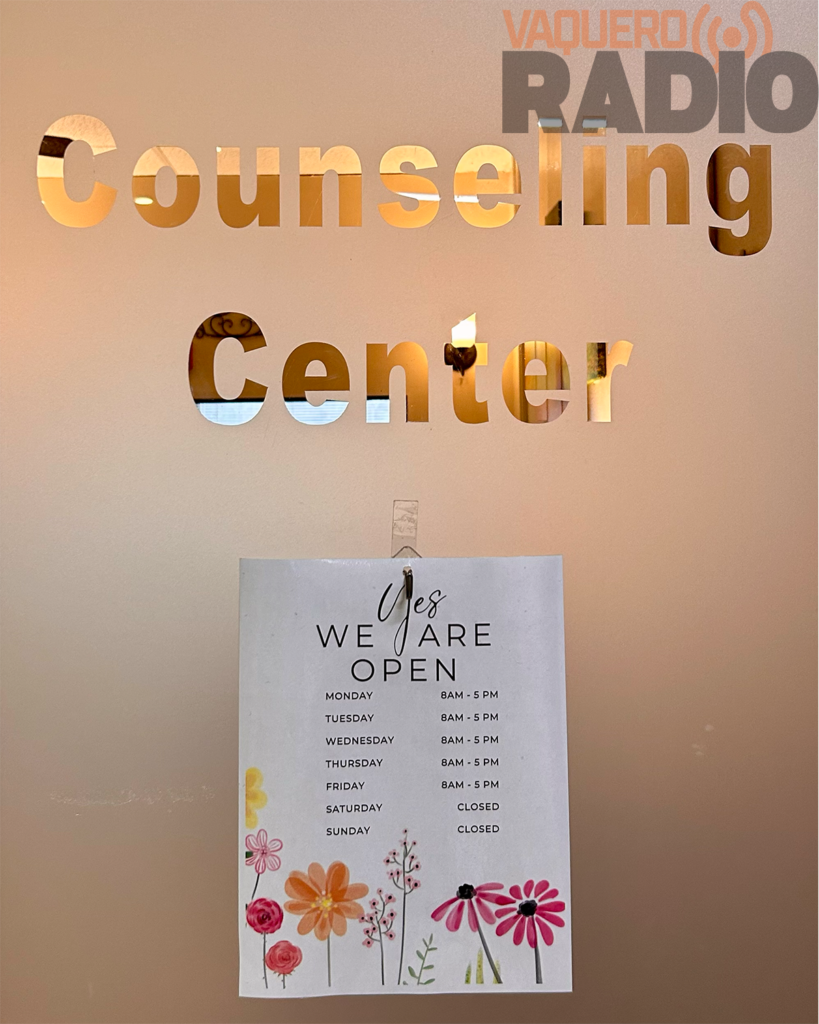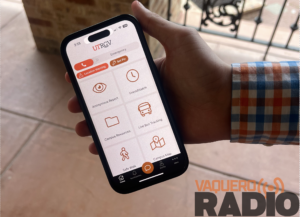
Victoria Gonzalez/Vaquero Radio
National Suicide Prevention Month is observed every September to emphasize efforts of treatment and resources for individuals affected by emotional crisis, as well as remembering the lives lost.
According to the Centers for Disease Control and Prevention, 49,000 people died from suicide in 2022. That’s about one death every 11 minutes.
UTRGV Counseling Center Director Christopher Albert said suicide is a human behavior that is hard to study because it’s often hidden. However, he said a common sign of suicidal ideation is a noticeable change in a person’s behavior.
“[A person becomes] more isolated,” Albert said. “They’re talking less, they’re talking negatively, especially if they say things like, ‘Oh, I might as well just give up,’ and given some indication that they feel like they don’t want to live anymore.”
But a person’s mood could change oppositely in some cases. Albert said that someone who has struggled with something they feel overwhelmed with for so long may elevate their mood temporarily.
“In their minds, they think, ‘Oh, well, I can just kill myself, and that will be the way to get out of this,’” he said. “And so they feel a sense of relief.”
Aaron Worthington, an officer of Active Minds, an organization that focuses on the importance of mental health, said to not leave someone alone who may be in danger of suicide.
“They think that ‘I have no friends,’ ‘I’m just alone,’ you know, ‘I have nobody to support me,’” he said. “So it’s really a good thing when students be there for each other and to support each other and to tell one another, ‘You are not alone we’re here for you.”
Albert said asking the question, “Have you been thinking about suicide?” and approaching the situation with genuine concern can help bridge someone struggling to get the professional help they need.
“When we ask the question, we are sending the message that it’s OK to talk about it,” he said. “And we know that once a person starts talking about what’s behind their suicidal thoughts and urges, that immediately starts lowering that risk for suicide.”
Only 50% of suicide cases are linked to clinical depression, Albert said. Mental health is not the only factor that puts people at risk for suicide. He said issues like psychosis and neurological conditions can affect a person.
He said people communicate suicidal thoughts differently. Some may say it in an “almost comical, offhand type of way” because they may feel uncomfortable reaching out directly.
“For example, they could be concerned about the response they get that people won’t take them seriously and so forth,” Albert said. “So anytime that someone brings up the words like, ‘I think I want to kill myself’ or anything like that, it’s important to take that seriously, and, you know, to ask, and do it in an area where they’re more likely to open up, for example, in a private area.”
Getting involved when someone mentions thoughts of suicide or depression is what Worthington believes to be an appropriate time.
“That is when we should try to intervene as much as possible because we are not there in the household,” he said. “We don’t know what happens outside what we know, or what they told us.”
While it’s important to ask about suicide, the manner of tone matters. Albert said it is essential not to ask in a shameful way such as, “You’re not having suicidal thoughts, are you?”
“We want to do anything possible to lower that shame because shame makes us hide,” he said. “And again, if we hide, we don’t talk about it, we deny it, and then we don’t get that opportunity to lower that risk and get the help that we need.”
There is a stigma around seeking help for emotional crises. Albert explained this could be from an individual’s experience of how they grew up or their personality. He said some say reaching out for help signifies weakness, but getting assistance can often signify strength because it takes a lot of courage to do so.
Worthington encouraged those who are afraid to reach out for help to find peer support groups and activities for guidance. He believes that anyone can be prone to suicide.
“There’s no simple classification of people,” he said. “No matter what race, no matter what gender, no matter what ethnicity, anybody can be vulnerable to suicide.”
Self-harm behaviors, such as cutting parts of someone’s body, may not do it with suicidal intent, but rather to cope with the experiences they have while they’re living, according to Albert. He said some people describe cutting as “a release of tension they feel inside.”
Oftentimes, there’s not a clear divide between what is suicidal and what is not. Albert described when to intervene when self-injury becomes dangerous.
“So a person may say or think, ‘I’m not doing this to kill myself,’” he said. “But then that same person may later feel really bad about something. And because they’ve been relying on self-injury and now they feel worse, all of a sudden they become kind of suicidal, right? Or at least they’re not caring whether they live or die. When they self-injure at that time, it could be more serious.”
Albert said trying to help someone who is suicidal is one of the toughest yet most important things to do in life because it involves life or death. He said if someone is planning on committing suicide and resisting assistance from close friends or family, then bring in external help such as police or a counselor.
Students experiencing suicidal ideation can visit the Counseling Center in University Center Room 109 on the Edinburg campus or Student Union Room 2.10 on the Brownsville campus.
Timely Care is an app available to students that gives them access to 24/7 mental health services.
The Vaquero Crisis Line phone number is 665-5555. The National Suicide Prevention Lifeline is 988.
This is Victoria Gonzalez for Vaquero Radio.




Informative and important article!